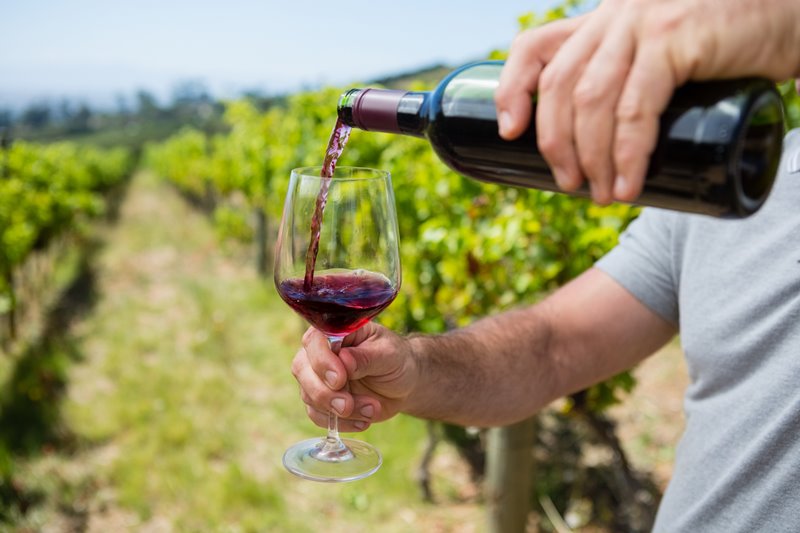Redefining viticulture: 10 groundbreaking techniques to lower alcohol content in wines
Adapting to evolving market trends and climate change - the latest innovations from the French Vine and Wine Institute
2023-07-04

In the ever-evolving wine industry, the pursuit of product enhancement and consumer satisfaction is unceasing. Vintners and oenologists worldwide are exploring ways to adapt to climatic changes and the growing demand for wines with lower alcohol content. Therefore, it is critical to implement innovative practices in vineyards and wineries with the aim of reducing the alcoholic degree in wines, while maintaining their quality and balance.
The French Vine and Wine Institute (IFV) has recently published a report detailing a set of techniques and strategies that can mitigate these challenges and help reduce the alcoholic content of wines. Here are the ten revolutionary recommendations from the IFV:
1. Manipulation of the Leaf Surface
By manipulating the vegetative canopy of the vine, it is possible to reduce the accumulation of sugars in grapes. Techniques such as late severe defoliation or severe topping, which aim to limit photosynthesis by removing approximately 30% of the vegetation from the apex, can contribute to a decrease in alcohol content between 0.1 and 0.8% vol.
2. Delay of Pruning
Late pruning can modify the vine's cycle and ultimately affect the alcohol content. However, significant effects on yield and polyphenol content must be considered when planning pruning dates.
3. Harvesting at Different Maturities
By choosing two harvest dates based on maturity, one can obtain a grape with a low potential alcohol degree and another at full maturity. These two varieties can then be mixed to produce a wine with lower alcohol content.
4. Yeast Selection
The choice of yeast can influence the wine's alcoholic yield. Some strains allow a higher yield, while others can direct the secondary sugar transformation metabolism towards the formation of co-products instead of alcohol.
5. Alcohol Evaporation
Partial de-alcoholization of wine can be achieved through ventilation at ambient temperature and atmospheric pressure. With specific equipment and an 8-hour treatment, de-alcoholization of up to 2% vol can be achieved.
6. Distillation
Distillation, a long-standing practice in the wine industry, can also be used to reduce alcohol content. However, its outcome is unpredictable, as it runs the high risk of causing a loss of aroma. To mitigate this effect, distillation can be combined with reverse osmosis or nanofiltration, which allows for the previous separation of a water-alcohol mixture while retaining some compounds such as organic acids and potassium.
7. De-Alcoholization with Membrane
The Memstar™ AA process strategically uses two successive membrane treatments to selectively extract alcohol. The first step involves nanofiltration that extracts a permeate mainly composed of water and alcohol. Subsequently, a system of hydrophobic membranes selectively extracts the alcohol contained in the water of the permeate obtained with nanofiltration. This alcohol-free permeate is continuously reinjected into the wine, thereby preventing the concentration of the treated wine.
8. Spinning Cone Column (SCC) De-Alcoholization
The Spinning Cone Column is a de-alcoholization process that uses a rotating cone column to distill alcohol at low temperatures. This helps preserve the wine's flavors and aromas. Although this technology allows the production of low-alcohol wines (0.5% vol), its usage for strong de-alcoholization can result in significant changes in the wine's structure and balance.
9. Use of Enzymes
Certain enzymes can help reduce the sugar content in grapes, resulting in a wine with lower alcohol content.
10. Improvement of Viticultural Practices
Increased attention to vineyard management practices, such as irrigation, rootstock selection, grape variety choice, and pruning techniques, can help control the sugar content in grapes and thus limit the wine's alcohol content.
Embracing the future: the way forward
In the context of an increasingly health-conscious consumer and changing climatic conditions that threaten viticulture's balance, it's imperative to continue exploring and developing techniques that allow the production of wines with lower alcohol content. Each of these techniques has its own challenges and opportunities. Some may be more effective in certain regions or with specific types of wine. As always, the key lies in experimentation and discovering what strategies work best for each vineyard and each wine in particular. While climate change presents significant challenges for viticulture, it also offers the opportunity to innovate and discover new ways of producing high-quality wines with a lower alcohol content.
Founded in 2007, Vinetur® is a registered trademark of VGSC S.L. with a long history in the wine industry.
VGSC, S.L. with VAT number B70255591 is a spanish company legally registered in the Commercial Register of the city of Santiago de Compostela, with registration number: Bulletin 181, Reference 356049 in Volume 13, Page 107, Section 6, Sheet 45028, Entry 2.
Email: [email protected]
Headquarters and offices located in Vilagarcia de Arousa, Spain.